New Carrier-Based Version Of The Gambit Family Of Combat Drones Is In The Works
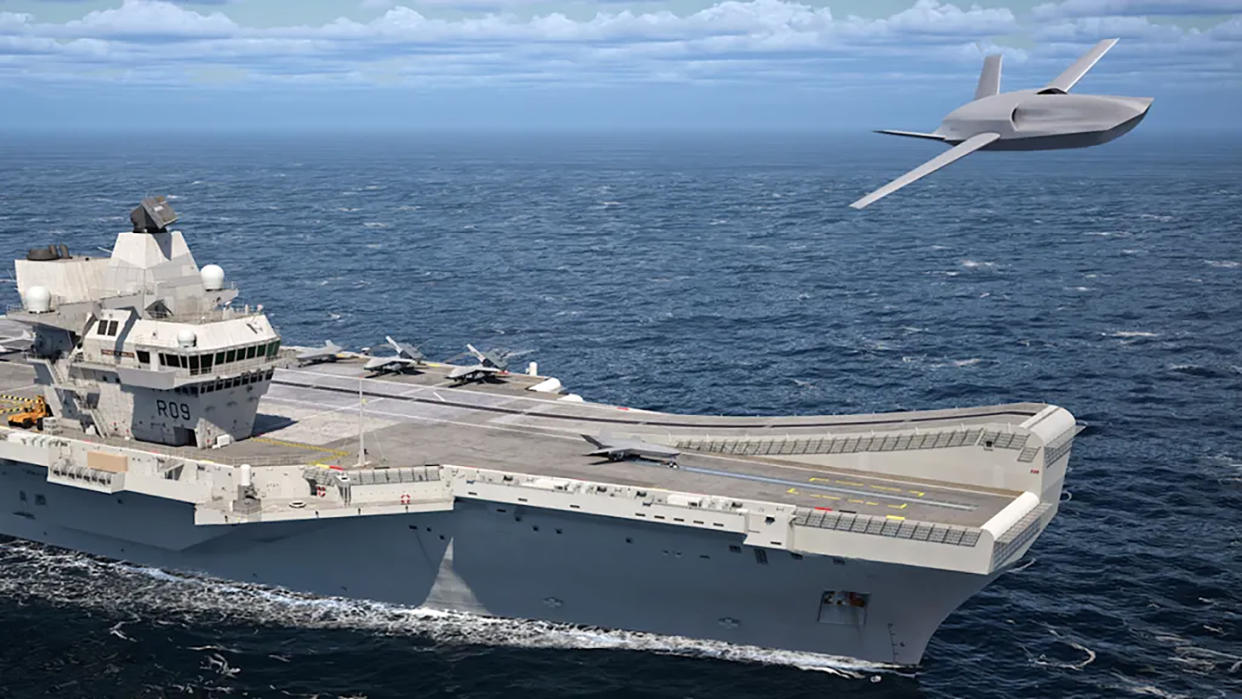
General Atomics has revealed work for a carrier-capable fifth member of its Gambit drone family, which is based around a common modular core ‘chassis’ concept. The company has also presented a larger vision for how this new uncrewed aircraft could fit into a future air wing aboard the United Kingdom’s Queen Elizabeth class carriers. Carrier-based Gambits could be of interest to other potential customers, including the U.S. Navy, and a stepping stone to future pilotless naval aviation capabilities.
A rendering featuring a catapult-equipped HMS Prince of Wales with a Gambit-series drone ready to launch, seen in part at the top of this story and below, was first shown at this year’s Farnborough International Airshow in the United Kingdom, which opened earlier today. Aviation journalist Gareth Jennings was among the first to spot the new concept art. The Royal Navy’s two Queen Elizabeth class carriers are currently configured as ski jump-equipped short-takeoff and vertical landing (STOVL) tactical fixed-wing types, but plans were announced last year to integrate assisted launch systems and recovery gear onto the ships in the future.
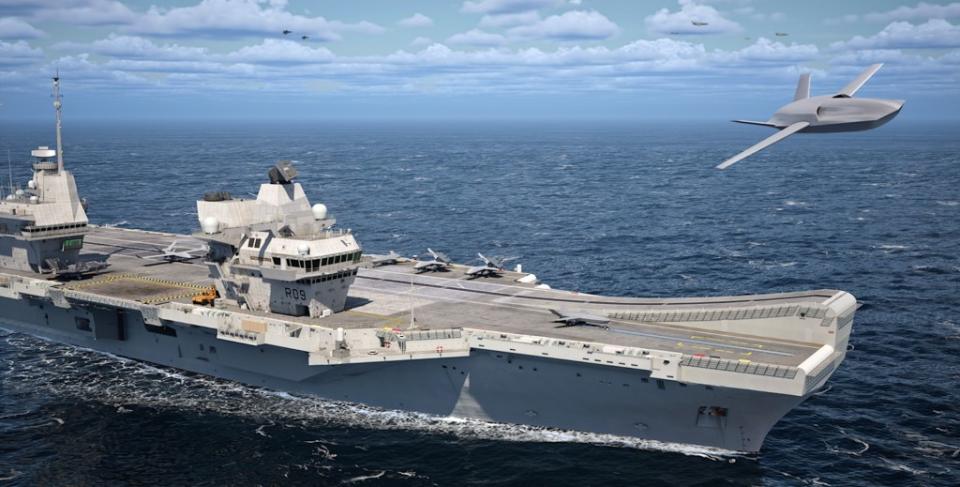
“We first started thinking of this as a carrier-capable version of Gambit 2, our air-to-air UCAV [uncrewed combat air vehicle] variant, so that’s what is reflected on the Farnborough booth graphics,” C. Mark Brinkley, a General Atomics spokesman, told The War Zone. “Lately, we’ve been thinking of it as a new concept we’re calling Gambit 5, designed for carrier launch and recovery, but weapons delivery need not be a primary requirement. It could be ISR [intelligence, surveillance, and reconnaissance] focused, like Gambit 1, or even some hybrid.”
Calm your beating hearts, matelots! One potential manned/unmanned future for the QE-class carriers on display at #FIA2024… pic.twitter.com/jXDKbelwkq
— Gareth Jennings (@GarethJennings3) July 22, 2024
General Atomics’ Aeronautical Systems division, or GA-ASI, first laid out the Gambit concept in 2022. The literal core idea behind Gambit is a common chassis that includes an artificial intelligence (AI) driven ‘brain,’ flight control system, and mission system, along with tricycle landing gear, onto which very different airframe types can be readily mated. GA-ASI previously presented four main proposed Gambit subvariants, including the ISR and air-to-air focused Gambits 1 and 2, which you can read more about here.
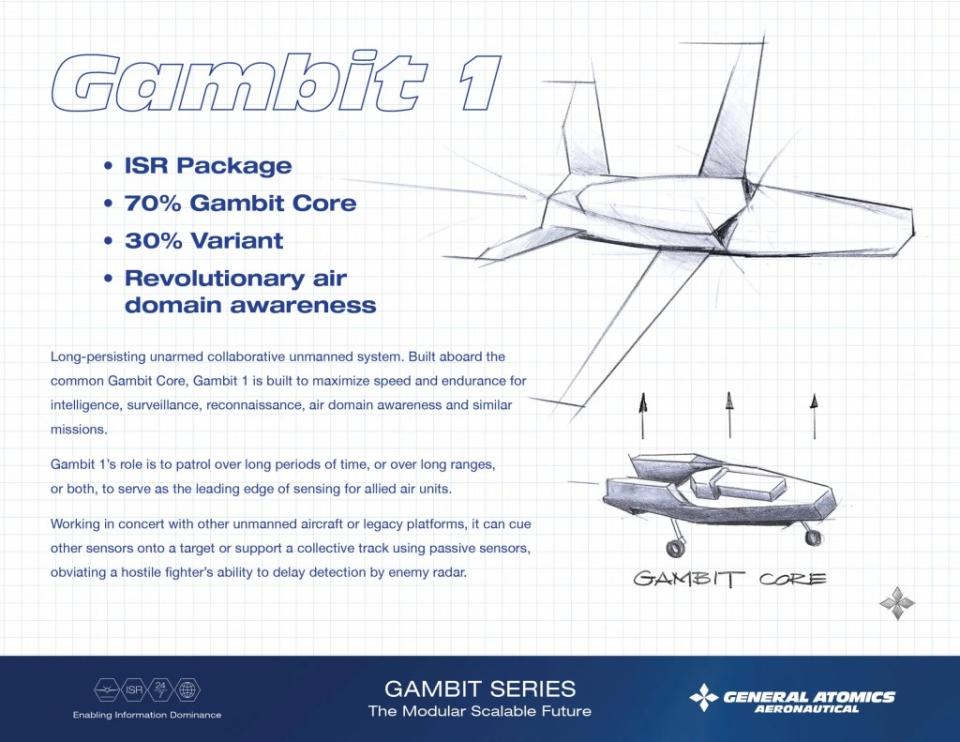
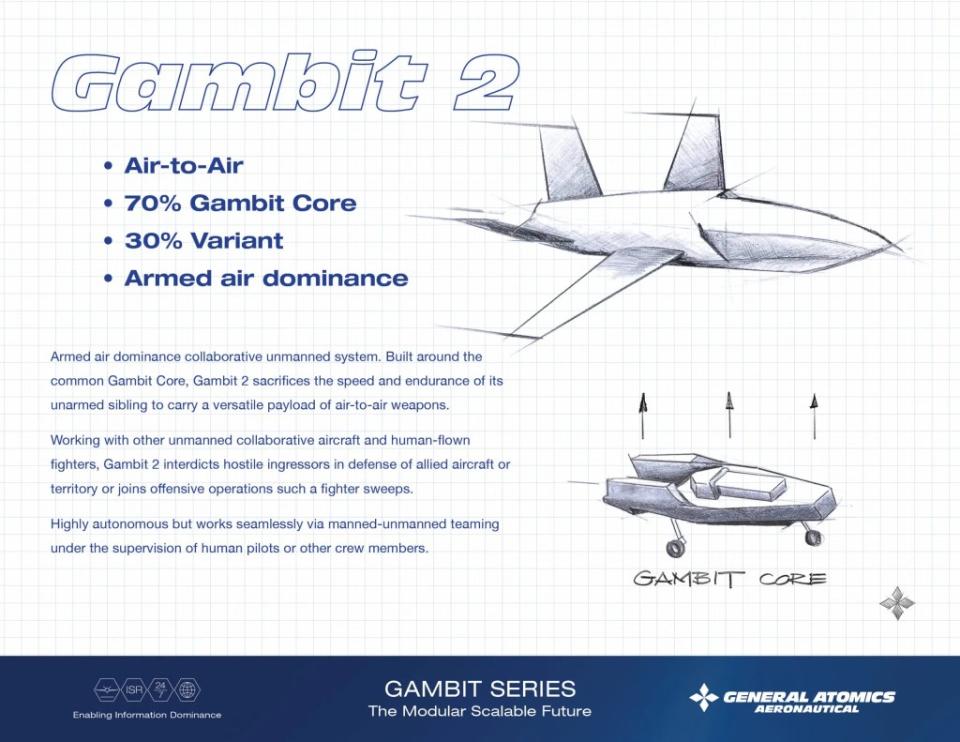
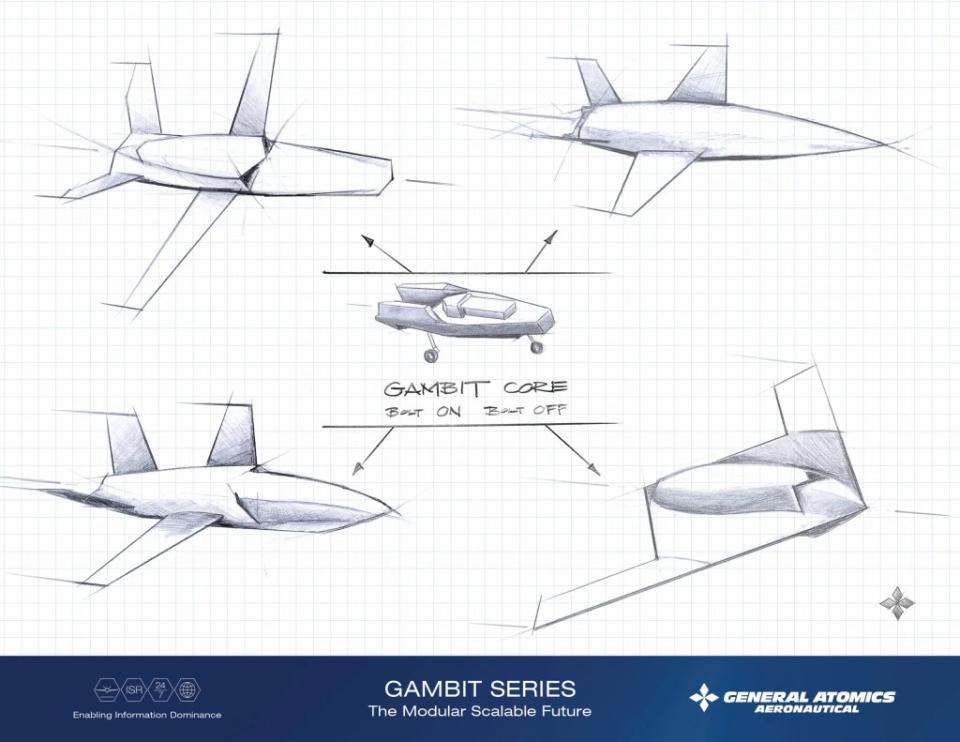
Though not yet confirmed, there are clear indications the drone that GA-ASI is working on under the first phase of the U.S. Air Force’s Collaborative Combat Aircraft (CCA) program, as well as the company’s XQ-67 from which the CCA design is derived, are leveraging work done on Gambit and it’s possible these initiatives could meld together in the future, if they have not already.
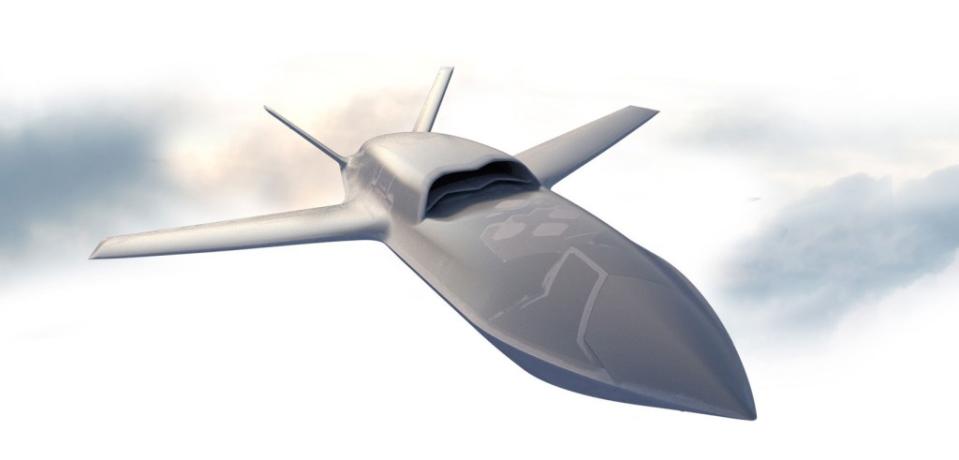
“The Gambit 5 concept is in the early stages of development,” according to Brinkley. “Our Gambit Series is designed to allow for rapid UCAV iteration for new mission sets, so we see it [Gambit 5] as a logical option.”
A major question for the future Gambit 5 will be how the common chassis needs to be adapted for the brutal realities of carrier operations. Catapults and arresting gear place much greater strain on an aircraft’s landing gear and airframe than they would experience during takeoffs and landings from a normal runway. A beefed-up chassis built around a common set of subsystems and possibly tweaked dimensional requirements seems like one way of overcoming this issue for Gambit.
“We are absolutely talking to potential customers at Farnborough about the concept,” Brinkley added, but did not name any specific prospective buyers.

British interest in a carrier-capable Gambit 5 would not be surprising. The Royal Navy’s aforementioned plans to turn the STOVL-configured Queen Elizabeth class carriers into short takeoff but arrested recovery (STOBAR) or catapult-assisted takeoff but arrested recovery (CATOBAR) types, or some hybrid thereof, are heavily centered on a desire to expand the uncrewed component of the air wings on those ships.
The rendering of the carrier-capable Gambit aboard Prince of Wales also depicts an air wing that includes carrier-capable MQ-9B drones fitted with a short takeoff and landing (STOL) kit, a separate concept that General Atomics unveiled in 2022, as well as F-35B Joint Strike Fighters.
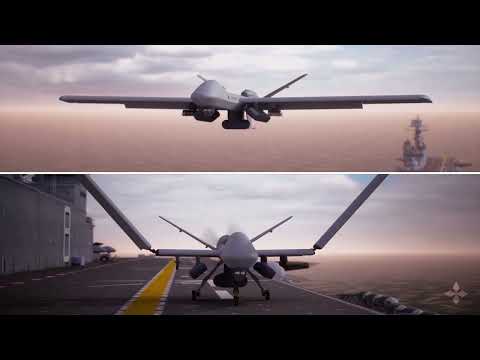
F-35Bs, a force managed jointly by the Royal Air Force and Royal Navy, are the only fixed-wing aircraft currently certified to operate from the Queen Elizabeth class carriers. The Royal Air Force has also fielded a land-based subvariant of the MQ-9B called the Protector RG Mk 1.
However, a carrier-based “Sea Protector” version of the MQ-9B is “a capability I would like to have in service in 2028,” Royal Air Force (RAF) Air Commodore Alex Hicks, who is in charge of ISR capability delivery for that service, said, according to a report Aviation Week published today. “The project is not yet funded and would be subject to the Strategic Defense Review, he noted.”
This follows the testing of various kinds of drones aboard Queen Elizabeth class carriers, including General Atomics’ short take-off and landing-optimized Mojave, which is derived from the company’s MQ-1C Gray Eagle.
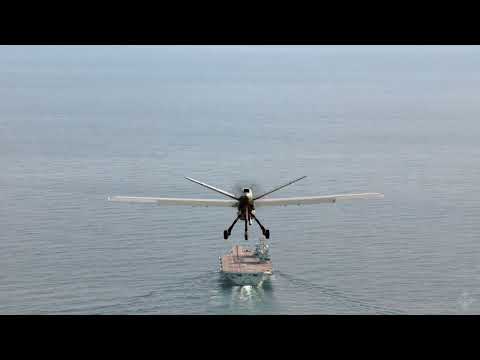
Sea Protector could well be a stepping stone for the United Kingdom to Gambit 5 or a similar carrier-based drone capability. British officials have also previously shown a rendering of a carrier-based variant or derivative of the Boeing MQ-28 Ghost Bat uncrewed aircraft featuring a tail hook. The company subsequently confirmed that was official artwork, but has so far declined to provide more information about that configuration.
.@RoyalNavy briefing on future unmanned rotary capabilities at #IMHelicon, but note the carrier landing MQ-28 Ghost Bat… #drone #drones pic.twitter.com/RQhjMAzNRx
— Gareth Jennings (@GarethJennings3) February 21, 2023
Boeing’s Australia-based subsidiary originally developed the MQ-28 as a land-based design for the Royal Australian Air Force’s (RAAF) Airpower Teaming System (ATS) program. The U.S. Air Force is now using at least one of those drones to support various research and development and test and evaluation work. The War Zone previously outlined a detailed case for how the trilateral Australia-United Kingdom-United States (AUKUS) defense cooperation agreement, specifically, could provide an ideal framework for cooperation between three member states on the Air Force’s CCA program, or an adjacent effort, potentially in the carrier aviation realm. The U.S. Navy has its own carrier-based CCA effort that is deeply interwoven with that of the Air Force, which officials have also now said could include foreign participation.
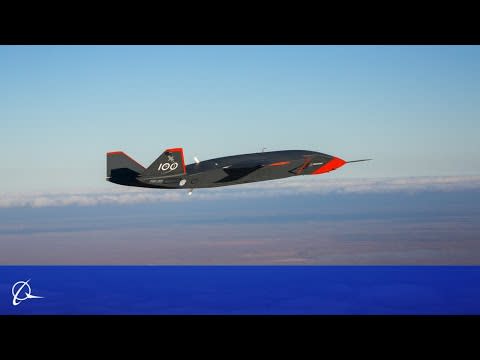
A mix of drones like the proposed Gambit 5 and the MQ-9B STOL could offer important boosts in capability and overall capacity for carrier air wings, in general. Armed uncrewed aircraft capable of engaging targets in the air and down below could help generate critical additional ‘mass’ during combat operations while working together with crewed types. Even unarmed ISR-focused drones would be able to extend the targeting capabilities of a carrier strike group or other friendly forces, as well as provide additional situational awareness.
For the Royal Navy specifically, an uncrewed airborne early warning aircraft could be especially useul to fill the impending gap that will result from the planned retirement of its Merlin Crowsnest helicopters in 2029.
GA-ASI itself sees Gambit 5 as a potential pathway to other carrier-based uncrewed aircraft offerings that it could pitch to various customers.
“This is more about opening the door for carrier-based operations with our jet-powered UCAVs, using modified, expeditionary versions of the technologies that underpin General Atomics’ established EMALS and AAG products,” company spokesman Brinkley explained.
EMALS and AAG here refer to the Electromagnetic Aircraft Launch System and the Advanced Arresting Gear that the company first developed for the U.S. Navy’s Ford class aircraft carriers. Variations of EMALS and AAG designs are now set to be used on France’s next-generation carrier and are expected to be a feature on India’s future INS Vishal. EMALS and AAG, or systems that leverage those developments, might also be an option for the Royal Navy when it comes to transforming the Queen Elizabeth class flattops into STOBAR/CATOBAR types.
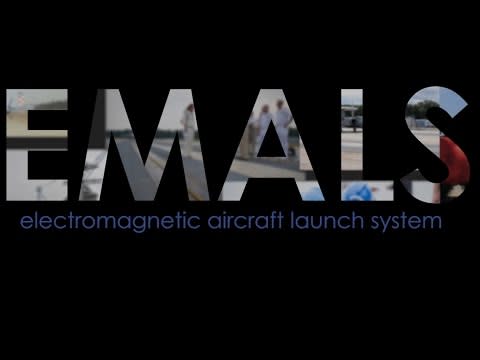
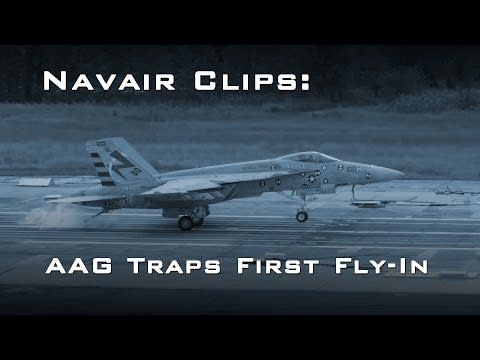
It has long been pointed out that EMALS and AAG can be more finely tuned in terms of the forces they exert on aircraft during launch and recovery, respectively, than traditional steam-powered catapults and arresting gear. This in turn expands the kinds of aircraft types, especially smaller and lighter designs like the proposed Gambit 5, that those systems can support.
“Our work with carrier-based UCAV operations is pretty extensive, going back to UCLASS [the U.S. Navy’s Unmanned Carrier-Launched Airborne Surveillance and Strike program] and other projects,” Brinkley noted. “We have great experience with relative navigation, autonomy, and other systems required for shipboard operations.”
UCLASS evolved into the less ambitious Carrier-Based Aerial-Refueling System (CBARS) tanker drone program. General Atomics’ CBARS entry ultimately lost out to Boeing’s MQ-25 Stingray. The U.S. Navy views the MQ-25 as its own important step toward a broader uncrewed naval aviation future. The service has said multiple times in the past that it expects up to 60 percent of the aircraft in its carrier air wings to eventually be drones. This is now expected to include fleets of highly autonomous and relatively low-cost CCAs designed to be ‘consumed’ as weapons or targets when they reach the ends of their service lives.
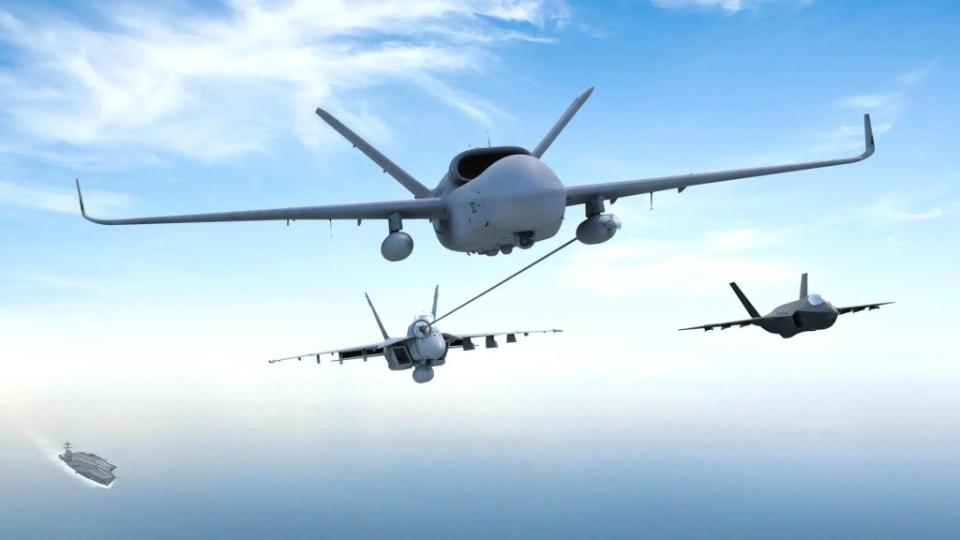
“So Gambit 5 is the result of more than 15 years of no-kidding research and engineering projects and internal investments,” he continued. “We really do this stuff. I think we could move fast.”
The Gambit 5 could be an important next step forward for uncrewed carrier-based aviation capabilities for the Royal Navy and other naval arms around the world.
Contact the author: joe@twz.com

